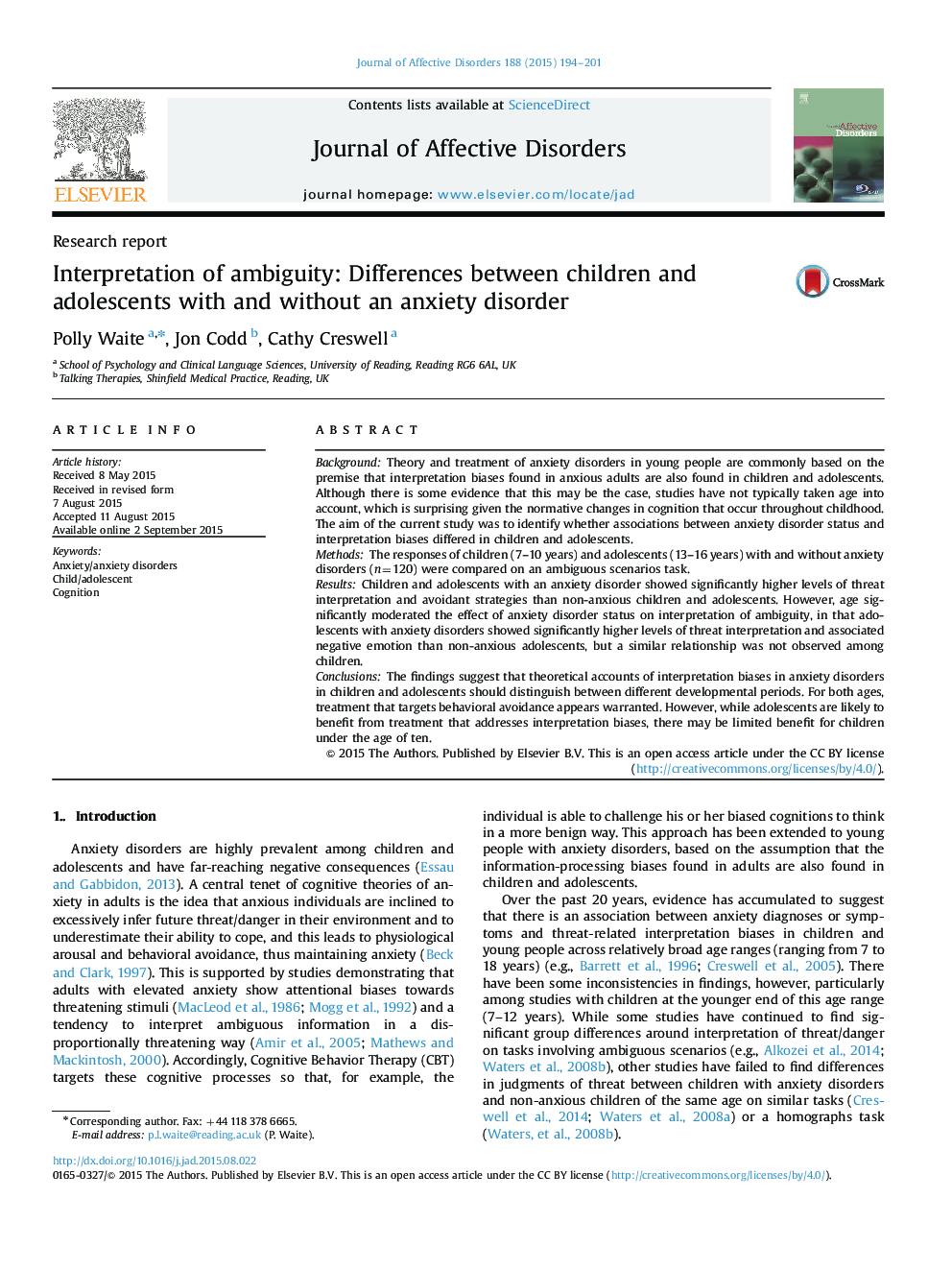| کد مقاله | کد نشریه | سال انتشار | مقاله انگلیسی | نسخه تمام متن |
|---|---|---|---|---|
| 6231064 | 1608137 | 2015 | 8 صفحه PDF | دانلود رایگان |
- Cognitive theories of anxiety emphasize the role of interpretation bias.
- We examine interpretation bias in anxious and non-anxious children and adolescents.
- Anxious adolescents show more threat interpretation than non-anxious adolescents.
- Anxious and non-anxious children show similar levels of threat interpretation.
- Theories should distinguish between different developmental periods.
BackgroundTheory and treatment of anxiety disorders in young people are commonly based on the premise that interpretation biases found in anxious adults are also found in children and adolescents. Although there is some evidence that this may be the case, studies have not typically taken age into account, which is surprising given the normative changes in cognition that occur throughout childhood. The aim of the current study was to identify whether associations between anxiety disorder status and interpretation biases differed in children and adolescents.MethodsThe responses of children (7-10 years) and adolescents (13-16 years) with and without anxiety disorders (n=120) were compared on an ambiguous scenarios task.ResultsChildren and adolescents with an anxiety disorder showed significantly higher levels of threat interpretation and avoidant strategies than non-anxious children and adolescents. However, age significantly moderated the effect of anxiety disorder status on interpretation of ambiguity, in that adolescents with anxiety disorders showed significantly higher levels of threat interpretation and associated negative emotion than non-anxious adolescents, but a similar relationship was not observed among children.ConclusionsThe findings suggest that theoretical accounts of interpretation biases in anxiety disorders in children and adolescents should distinguish between different developmental periods. For both ages, treatment that targets behavioral avoidance appears warranted. However, while adolescents are likely to benefit from treatment that addresses interpretation biases, there may be limited benefit for children under the age of ten.
Journal: Journal of Affective Disorders - Volume 188, 1 December 2015, Pages 194-201
